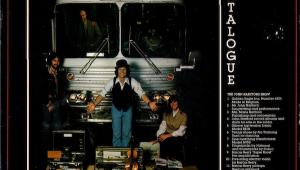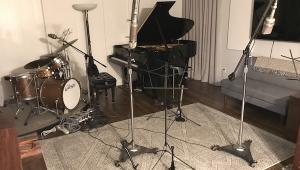Hi Michael:
Thanks for the tour. This was the most comprehensive tour of the Wilson factory I have ever seen and I must say it was very impressive. While Wilson haters think the speaker enclosures with their professional Ferrari-like paint jobs are a bit of a gimmick, we can see how the enclosure materials are carefully developed, engineered and selected. Thus, the drivers, which also appear to be carefully developed and modified in concert with top manufacturers can speak as purely as possible with as little cabinet vibration and back wave interference as possible. So---yes, the attention to the gel coat, clear coat and paint together with the process to make same well near perfect may take up a not insignificant part of the employee payroll,work space, time to completion,etc. In that regard the process may be subject to criticism as it relates to the cost of the speakers,--- but I say-- once we have established how important the enclosure material is to the sound and how well Wilson handles that central part of the sound equation together with the drivers to be mounted thereon and crossovers therein, doesn't it make sense to make it a compelling (if not beautiful) work of audio art that one would be happy to put on display in a home environment as well?
I have owned Sophis, WP 7s and Sashas. I hope to eventually move up to Alexias if the price is not too dear when the time comes. But one thing I can say for sure is that I am and will remain a big fan of Dave's vision throughout the years and of Wilson Audio today.
Dave Wilson's WAMM Master Chronosonic Loudspeaker Reaches For The Heavens
Without my HD camcorder on hand, I was forced to shoot the video embedded below with an iPhone, that I forgot to orient horizontally so the picture is "width challenged." However, I think it's still useful and I hope you'll watch it.
The afternoon of listening to the new $685,000 speaker was at the home of Dave and Sheryl Wilson, where I'd previously visited with a group of journalists to hear the then just introduced $200,000 XLF.
Wilson's original WAMM speaker ("WAMM" stands for Wilson Audio Modular Monitor)—the company's first commercial product— was introduced back in 1985. It was an attempt to build a reference system in both the amplitude and time domains. In other words a speaker that reproduced full bandwidth, flat response as well as time coherency.
To achieve the latter, Wilson pioneered the use of modular, adjustable speaker enclosures that could produce accurate time alignment at the listening position regardless of how far from the speaker the listener sat or his ear height when seated. His innovation was awarded a patent.
With the original WAMM retired a few decades ago, Wilson felt the need for a new "flagship" speaker—if just a pair for his own pleasure (his living room is large enough to swallow pair of XLFs), though overseas distributors might have applied some pressure as well. The new WAMM will be limited to a run of seventy pairs.
If you follow online audio sites you probably already know something (or a great deal) about these speakers and have read my colleague Jason Victor Serinus's Stereophile coverage.
Over the past few weeks other members of the audio press have also visited the Wilsons to hear and report on the WAMM Master Chronosonics. With Jason already covering the introduction for Stereophile, I was there more to add to my understanding of the recently introduced $105,000 Alexx loudspeaker I'm now reviewing for Stereophile.
Some of the WAMM developments have found their way into the Alexx, which was a project developed by son Darryl. In fact, with Dave so deeply involved in the multi-year WAMM development, he's chosen to step down as President and hand that responsibility over to Darryl, who's also headed other successfully introduced Wilson speakers including Sabrina and Yvette. Sheryl Lee also steps down as Vice-President.
So I spent a pleasant afternoon, volume control in hand, listening with Dave and Sheryl to a pair of $685,000 loudspeakersl. Spiked, these speakers are eighty-six inches (or more than seven feet) tall! Yet they are thinner than XLFs. We listened, we talked, and it was a great deal of fun. We played vinyl through Dave's Basis turntable, vinyl rips I brought, and pure digital sources via a dCS Vivaldi.
I learned that the WAMM and the Alexx use the same woofers and share a few other components and design features. So how did the WAMMs sound? Well it's not a cop-out: I'm not allowed to discuss or reveal anything about my forthcoming Alexx review so, I can't say much other than that if you think a driver array like that can't produce a coherent focused, height-correct image, you are wrong. The WAMM like other Wilson speakers I've reviewed and owned, confirms the effectiveness of Dave's time alignment concept.
Listen, I've run into my share of Wilson skeptics and full-blown Wilson haters. They are a weird bunch (including a few reviewers) willing to give other speaker brands a pass for bad sound at a hi-fi show but always quick to criticize Wilson for same.
I hear them, skeptical of the smooth, almost fairy-tale quality of the father-to-son company transition and equally skeptical that son Darryl is responsible for the recent run of successful, well-received loudspeakers for which he's given credit. Having for well more than a decade been a paying customer, a reviewer, a company observer and a realist, I'm fully onboard with the scenario.
Sure, if you watch the company's YouTube WAMM launch video, you might find it a bit grandiose, but that's the show-biz part of any good launch, whether of a WAMM or an iPhone. The company hand-off and smooth father to son succession may sound fairy tale-ish but if you knew the Wilsons you wouldn't be surprised by it—which is not to say they and the company haven't had their share of tough times and struggles.
What I admire most about them as people and Dave as a designer steeped both in applied science and musical culture, is that he is clear about which qualities of reproduced music he finds most important and he's comfortable with the inevitable compromise/design choices that result from trying to achieve them. He also understands why others make different choices that inevitably result in other compromises.
For as long as I've known Dave Wilson I've always thought that for him, his only competition was Dave Wilson. With the new WAMM Master Choronosnic speaker has he beat the competition? I can't say. Others have, but I have to wait for my Alexx review.
- Log in or register to post comments


Great video. Thanks. I started it and saw 29 minutes and I figured I'd only watch part. Watched it all.
I think you nailed the often under-appreciated aspects of design compromise. I build stringed instruments and I have designed software similar to the software discussed in the video. I have measured and critically listened to hundreds of violins and guitars. In building classical guitars I have sacrificed attack and loudness for harmonic richness and shimmering decay. I've sacrificed power in the upper registers for evenness in the lower registers. I personally own both Focals and Wilsons. I can say without reservation that the silk tweeters sacrifices timbral accuracy relative to the Be tweeters for certain frequencies. However, the time alignment and coherence of Wilsons are extraordinary, as are the "sloshing" modes (depending on the room and frequency). At some point one needs to pick. Kudons to Dave Wilson for listening to live music so much and trying to capture what he feels is most important in his design.

These speakers may sound good, but they sure are ugly.
BTW: Nice drapes.

The pictures that accompany this article remind me of the comedian's line, "Let us put 20 seconds on the clock and see how many jokes we can crack!" Except 20 seconds would not suffice here:
-- Do the Wilsons get their home decorating cues from the cheesy Holiday Inns where hifi shows take place?
-- Now I see why my Wilsons look like the Terminator just landed in the living room! I need to get some pink drapes and matching rugs then all will be OK.
-- Did the oligarchs who buy Wilsons send over their their decorator to make the Wilson home look like like a lower budget Moscow or Dubai apartment?
In brief, I could never imagine a room where these designs would ever look OK. Now I see their maker cannot either.

The downside to Wilson's approach in my eyes is that only one person can truly appreciate the sound of these speakers at any given time. I wonder if (primarily) single driver speakers or ones with coincident drivers would make it more feasible for more than one person to enjoy listening at the same time.

Having a skunkworks and trying to build the best cost-is-no-object is a hallmark of passion, dedication, and the pursuit of "the best". Google, Tesla, and Gore have skunkworks; The Dollar Store, Craftsman, and Timberland do not. Naim has a $200k Statement amp. Magico has a $600k Ultimate Horn. It's natural that someone will ask the price and that the number will be large. Dave Wilson isn't building these to put food on the table, though. It seems silly to approach discussing these speakers like one would a pair of speakers that I can drive to hear today, buy, and have in the listening room by the end of the week. I would like to hear more about the design philosophy, though. Cosmetically the Chonosonic looks like a pastiche of existing Wilson cabinets. It's probably got one helluva crossover but I don't understand what Wilson is specifically trying to do that's different than what they already do.

Hello Michael, many thanks for posting your Wilson trip report. Very informative. May I ask when your Alexx review will be published? Thanks

I was thinking the same thing. And it would be my funeral if I bought those speakers and the little bride found out what I spent on them. I always thought, Dam I could buy a new Benz for the cost of those speakers! Now I think, Dam, I could buy a nice second home for the cost of those speakers. LOL.

It´s not about the money, not for me personally. But In a perfect manner this picture reflects the senseless, soulless, pointless absence of taste, good style and any approach of an ambitious reproduction of recorded music. It´s just a mirror of an absurd megalomaniac that seems to become a normal standard.

For some reason hifi reviewers seem to have always hated anything with good taste. They railed at the gorgeous Beograms and Beocenters of the 70s but now that B&O also produces hideous oligarch speakers like the BeoLab 50, they sing their praises -- both this month's Stereophile and HiFi News do, for instance.
Same goes for the homes where these gadgets typically get displayed in magazines...always something tawdry with beige and pink walls and furniture, yes, the funeral parlor. Then the always present, Alien style cables snaking all over the floor.
If these are my audiophile peers, I do not want to know them. Still though, isn't a love of music at least somewhat related to other arts? Like architecture, home decor and just a joy of living? Baffles me every time.

He must have large profit margins in his other products if he is that rich.

...and he wears pleated trousers!!!
My God, people, do you hear yourselves complaining about what the speakers *look* like? Did the wives take over in here?
Like a Holland & Holland duck gun, I'll never be able to afford it - but I'm glad somebody makes them.

I make an investment on my house every three months and this month was supposed to be a drain repair service from RainTek but but after reading this article I so want to get this master chronosonic loudspeaker instead? WHich one do you think is a better investment. Drain repair is certainly necessary but this speaker is awesome!





















































